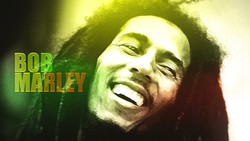A Cryptarythmic Tribute To Bob Marley
 B O B
B O B
* B O B
M E O Y + M I L O 0
+ M E O Y 0 0
= M A R L E Y
In the multiplication table above, each digit has been replaced by a letter. Find the value of each letter. Your answer should be as the letters appear in BOBMARLEY
The answer is 353124609.
This section requires Javascript.
You are seeing this because something didn't load right. We suggest you, (a) try
refreshing the page, (b) enabling javascript if it is disabled on your browser and,
finally, (c)
loading the
non-javascript version of this page
. We're sorry about the hassle.
Let us remind ourselves of the code:
Let us notice the second 'solution line' [I dunno what's it called, really.]. In the line M I L O which would represent the product of the first B O B by the O of the second B O B , we know that the last digit is represented by an O . That O represents the units digit of the product of the second B of the first B O B and the O of the second B O B , that is, the last digit of the product of B and O has a last digit of O . There are a lot of possibilities here as I will show in the table below:
The value n represents any number [recall your identity and zero properties of multiplication]. The value 2 m + 1 is an odd number: 1 × 5 will give you 5 , 3 × 5 will give you 1 5 , and so on.
We will use these information to look at other parts of the crypt and deduce the values of the digits.
If we look at the product of the last B s of B O B , we know that B × B has a last digit of Y , which means that the last digit of the product of B × B is not also B . From here, we can rule out the possibility of B being a 0 , a 1 , or a 6 since 0 × 0 = 0 , 1 × 1 = 1 and 6 × 6 = 3 6 and the remaining options are
Looking back at the product B × B = Y , knowing that B is not 0 , 1 or 6 , we have the possible products:
4 = 2 × 2 9 = 3 × 3 1 6 = 4 × 4 2 5 = 5 × 5 4 9 = 7 × 7 6 4 = 8 × 8 8 1 = 9 × 9 .
With the exception of the possibilities B = 2 and B = 3 , the product B × B will yield a two-digit number. If that's the case, then the tens digit of the product of the last B s of B O B will be added to the product of O × B . But from what we knew about the product of the second B of the first B O B and the O of the second B O B which has a last digit of O , we should deduce that the product of B × B = Y should be a one-digit number: had it been a two-digit number, then whatever the tens digit of B × B will be, that will be added to the product of O of the first B O B and the last B of the second B O B and the result will bear some other last digit and not O . Thus, the possibilities of B being either 4 , 5 , 7 , 8 , or 9 should be discarded, leaving us with two possibilities for B : B = 2 and B = 3 . Our candidates table has now shrunk to
Finally, observe the second adding column from the right:
Since B × B has a single-digit product, Y , nothing is to be carried over O + O = E . Now, O + O = E implies that the last digit of the sum of two O s is not also an O . We can discard the possibility of O = 0 , leaving us with
That is, B is the digit 3 and O is the digit 5 . Thus, B O B is actually 3 5 3 . The rest is just calculating the product of 3 5 3 × 3 5 3 :
The sought answer is 3 5 3 1 2 4 6 0 9 .